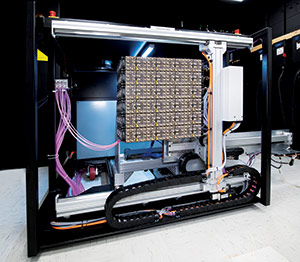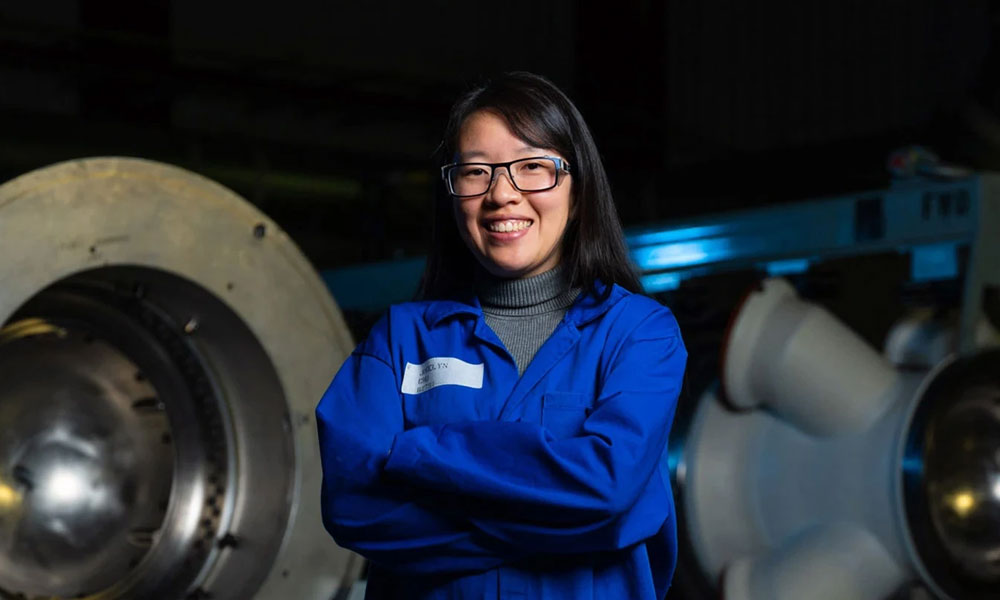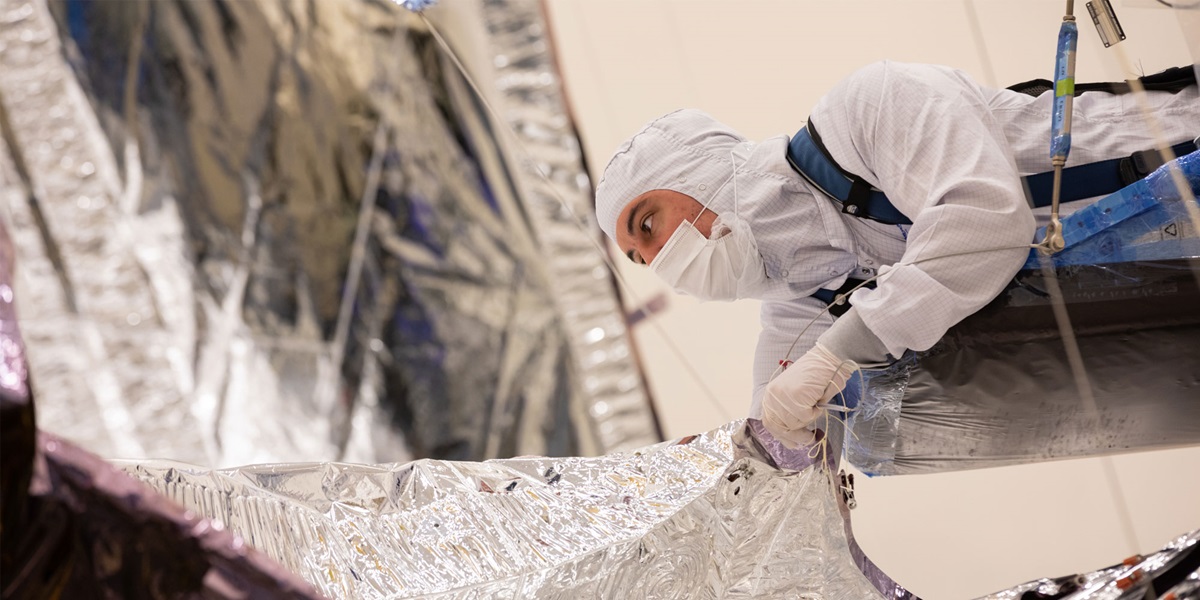In the 1940s, science fiction author Isaac Asimov theorized the concept of collecting the sun’s energy in space, then beaming that energy down to Earth. Today, Northrop Grumman’s Space Solar Power Incremental Demonstrations and Research (SSPIDR) Project team, based in Baltimore, Maryland, is working to make this scientific fantasy — transmitting solar energy from space to anywhere on Earth — a reality.
“Because it’s been this science fiction idea for so long, I think everyone is still a bit skeptical when they hear what we’re working on and what we’re trying to accomplish,” said Engineering Program Lead John Mrowka.

With ongoing advances in photovoltaic cells — more commonly known as a type of solar cell, which uses semiconducting materials to convert the sun’s light into energy — solar power innovation has continued to grow and evolve the world’s energy sources. However, ground-based solar arrays, such as rooftop solar panels and solar farms, are limited by geography, climate and infrastructure. What about areas that have been hit by a natural disaster, incapacitating their power grid, or places that don’t have a power grid at all, like troops on the front lines?
Lighting the Darkest Corners of the Globe
These are the questions that SSPIDR Program Director Tara Theret and her team think about. As ambitious as it is revolutionary, this project would utilize on-orbit, highly-efficient photovoltaic cells to collect solar energy. This solar energy would then be converted into radio frequency (RF) energy and beamed to a receiving station on Earth — like a power plant, but for space solar energy — where it would be converted to usable energy.
“Every day we make new advancements toward changing the world. Being a part of this team, I honestly feel like an anonymous superhero.
Arlanda Nunsett, program engineer
“Space solar power beaming has the potential to provide energy anywhere on Earth at any time,” said Tara. “This technology could make power available to remote locations that need medical and communications equipment.”
Providing power to forward operating bases (FOBs) is a critical use case for this technology. According to the U.S. Air Force Research Laboratory — who, along with the Department of Defense and U.S. Space Force, is partnering with Northrop Grumman on this program — one of the most dangerous parts of ground operations is ensuring that a FOB receives power, a feat usually accomplished with convoys and supply lines that become major targets for adversaries. Space solar power beaming would essentially relocate these supply lines to space: service members could set up a ground receiver to gain access to solar power collected in space.
From Concept to Test
Integration and Test Lead Kate Stambaugh describes the program as groundbreaking.
“The benefits of this technology are varied and far-reaching: disaster relief, powering remote sensors, reducing energy supply chain burdens, delivering solar power in bad weather or during the night, you name it. This is a paradigm-shifting capability that could open up entirely new industries we cannot even dream up yet,” said Kate.
Today, the SSPIDR team is developing a series of flight experiments designed to mature technologies that could build an operational solar power beaming system in space — quite literally Isaac Asimov’s idea in action.
At Northrop Grumman’s manufacturing facility in Baltimore, Maryland, engineers have developed a test environment in a lab that simulates how the photovoltaic tile receives light and directly powers the RF components. This provides critical insight into how each component and the system must operate in harmonious alignment to transmit a useful amount of energy from space to the desired location on Earth.
As the team continues to work through ways to impact the world’s power delivery, they have the opportunity to help people in ways not even imaginable yet.
“Every day we make new advancements toward changing the world,” said Arlanda Nunsett, program engineer. “Being a part of this team, I honestly feel like an anonymous superhero.”

Life at Northrop Grumman: Recent Stories
Shape your career journey with diverse roles and experiences that expand your expertise, feed your curiosity, and fuel your passion.

Life at Northrop Grumman: Archived Stories
It takes every one of us to make the impossible a reality. See what life is like at Northrop Grumman.